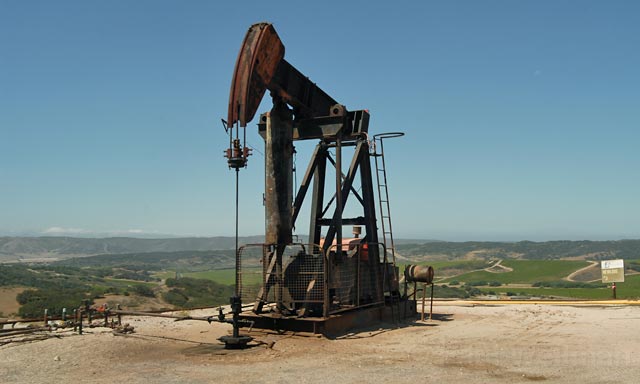110 New Oil Wells On the Way?
County Gives Santa Maria Energy Permission to Drill, But Appeal Is Likely

After the Santa Barbara County Planning Commission voted 3-2 last week to approve the Santa Maria Energy Oil Drilling and Production Plan — 136 oil wells across 32 acres near Orcutt — people on both sides of the vote began to worry that the project could set a precedent. The vote was in favor of limiting the project’s greenhouse-gas emissions to a 29 percent threshold, meaning that instead of the project’s projected 88,000 metric tons of emissions per year, just under 67,000 will be allowed. While those who voted for the 29 percent mark deemed it too restrictive, others said it doesn’t nearly go far enough and makes this project the first in the county to able to release more than 10,000 metric tons of emissions per year.
The Environmental Defense Center (EDC), which has argued that Santa Maria Energy could technically limit its emissions to zero, is likely to file an appeal by the October 7 deadline, said Nathan Alley, an EDC attorney. If appealed, the approval would go to the Board of Supervisors. Alley said the Planning Commission’s thumbs-up to the higher-than-normal limit merits some questions. “They had used the 10,000-metric-tons-per-year threshold for other projects, so at the very least, we were hoping the county would be consistent,” he said.
Immediately after the commissioners’ vote, Santa Maria Energy released a statement, saying “We are pleased with the Planning Commission’s approval of our project and want to especially thank all of our supporters. The decision was well-deliberated and we hope that is fully considered before someone decides to appeal.” Without an appeal, said public and government affairs manager Bob Poole, the company could move forward with the permitting process for the 110 new wells — there are already 26 pilot wells on the site — along with two steam generators, a crude-oil pipeline, and a water pipeline that will transfer recycled wastewater from the Laguna County Sanitation District for the steam generators. The oil will be produced through a process called cyclic steam injection, which involves injecting steam into the wells to get the oil to flow. The steam generators will be the producers of the greenhouse gases.
The initial vote for the project was 3-2 against a proposed 16 percent emissions threshold, which commissioners Daniel Blough (5th District) and Larry Ferini (4th District) supported. The final vote, also 3-2, approved the 29 percent threshold, which 1st District Commissioner Michael Cooney and 3rd District Commissioner Joan Hartmann voted against, saying it wasn’t high enough of a restriction on the greenhouse gases.
The 29 percent and 16 percent threshold designations came in the wake of the state’s Global Warming Solutions Act of 2006, otherwise known as AB 32. Under the law, California is aiming to get its greenhouse-gas emissions down to 1990 levels by 2020, with a statewide threshold of 16 percent. Santa Barbara County’s threshold is higher, at 29 percent.
What Cooney wanted, he said, was for the project’s total emissions to not exceed about 29,000 metric tons per year, a number accounting for the 18,000 metric tons that the existing wells produce now, plus an additional 10,000-plus for the new project. The 29,000 metric tons would be more than the 10,000-metric-ton limit — which has been imposed on projects such as the Goleta Storage Area and Key Site 30 in Orcutt with the understanding that under that limit, no mitigations are required, Cooney said — but preferable to the 67,000 metric tons approved.
“I have a strong belief that new stationary projects like this one should try to eliminate more greenhouse-gas emissions than the Planning Commission approved,” Cooney said, adding his fears about a precedent. “It’s not going to be good enough to just run in place. We have to make up for lost ground.”
If the project were to go over the 29 percent threshold, Alley explained, Santa Maria Energy will have to buy credits to mitigate the excess. Buying credits is a process by which other energy companies can sell credits when they clock in under their own thresholds. There aren’t currently any trading programs in the area, Alley said, but that implementing a program in the county would be good for the economy and the environment.
Although he voted in favor of the 29 percent threshold, Commissioner Blough said he thought the state standard of 16 percent would have been fairer. “I wouldn’t call it a good compromise,” he said. “I think it’s a bad precedent. I’m not going to do anything to thwart [Santa Maria Energy’s] ability to do business.”
Barring an appeal, construction on the project could start next year, Poole said, with the wells drilled over the next few years.



